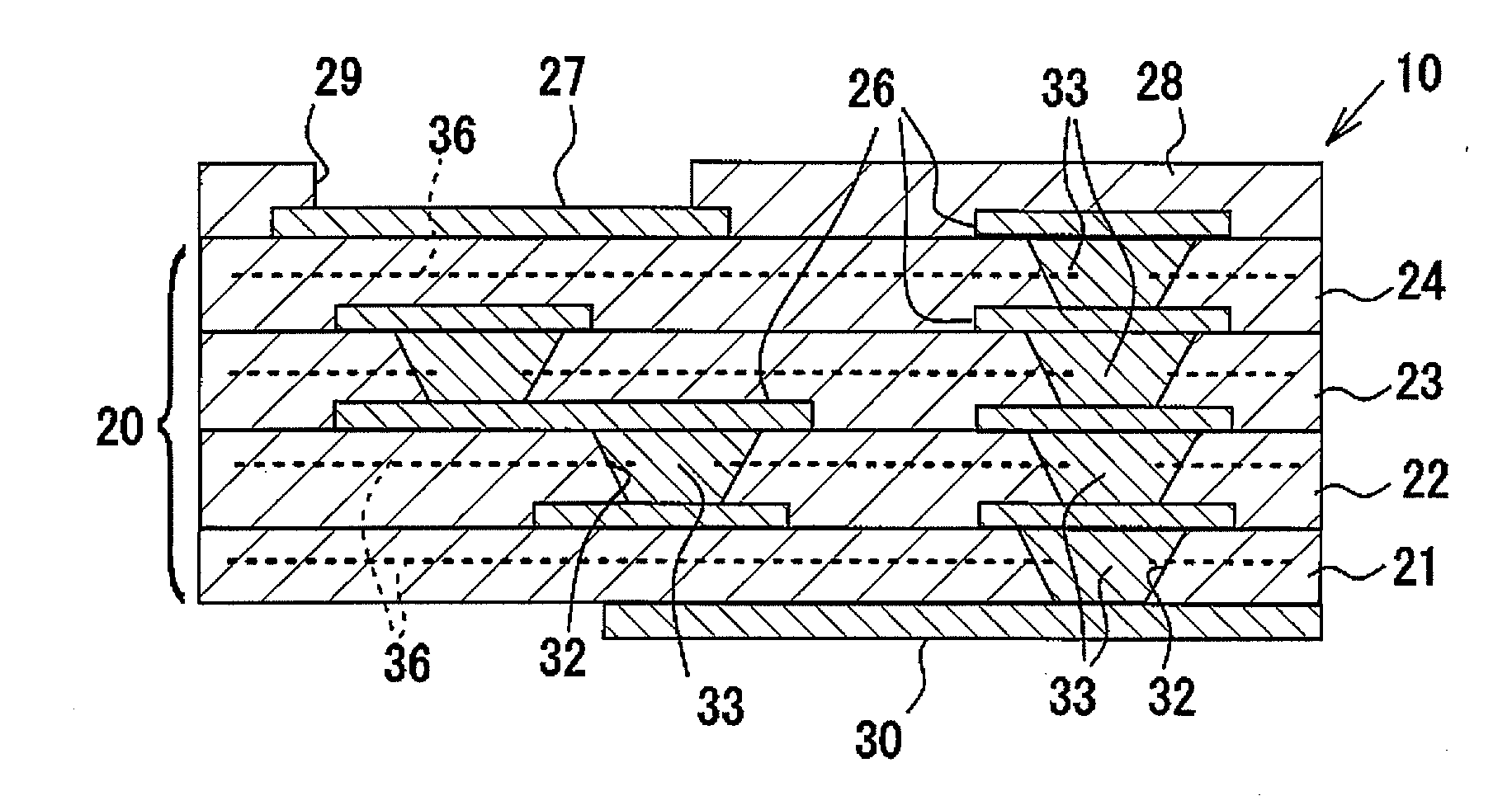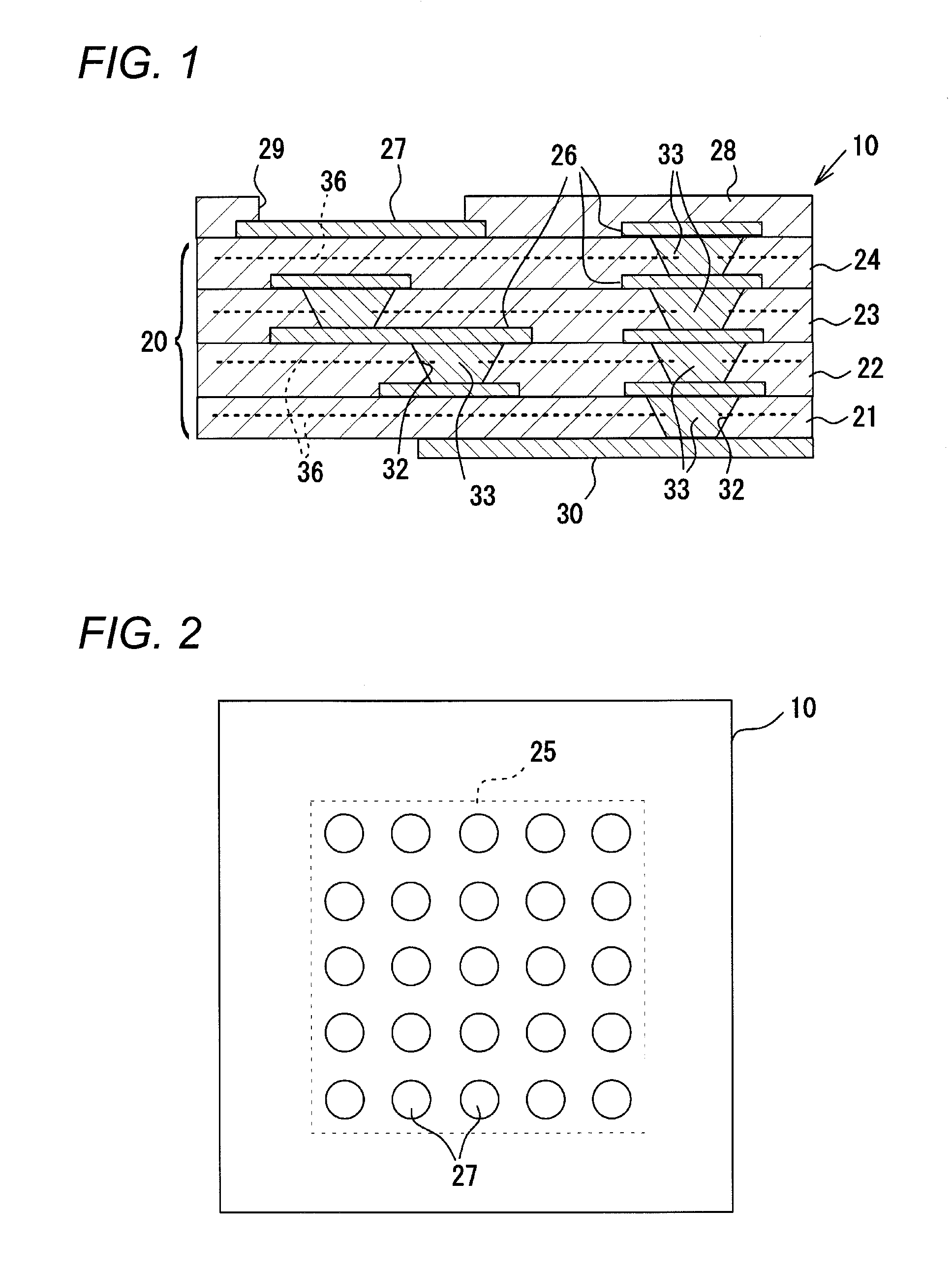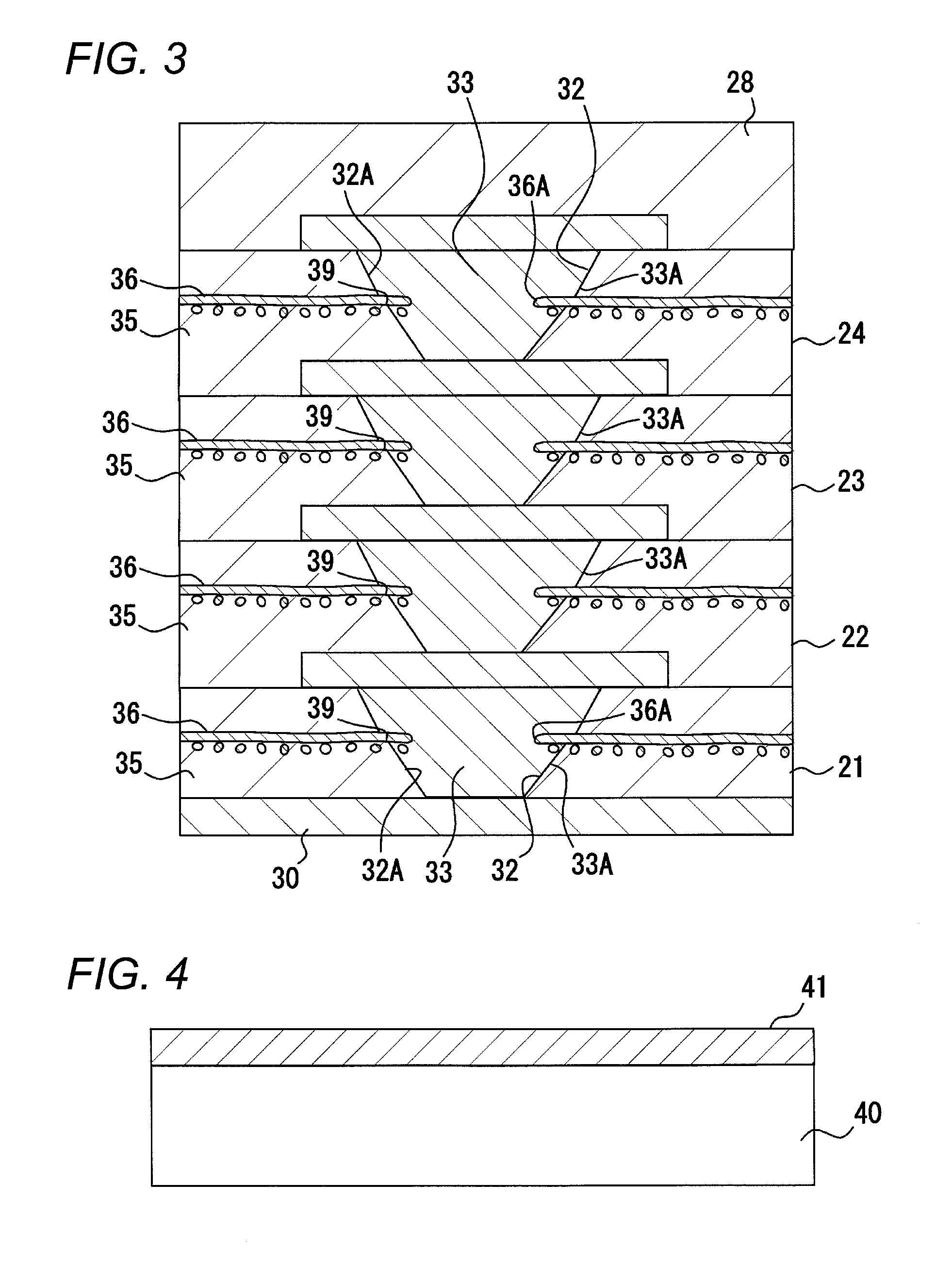Multilayer wiring board
a wiring board and multi-layer technology, applied in the direction of printed circuit details, printed circuit aspects, printed circuit manufacturing, etc., can solve the problems of disturbance of the increase in speed, the pitch difference between the terminals on the ic chip and the mother board side, and the difficulty of directly connecting the ic chip onto the mother board, so as to increase the adhesion strength and enhance the product yield
- Summary
- Abstract
- Description
- Claims
- Application Information
AI Technical Summary
Benefits of technology
Problems solved by technology
Method used
Image
Examples
Embodiment Construction
[0042]An embodiment according to the invention will be described below in detail with reference to the drawings. FIG. 1 is an enlarged sectional view showing a schematic structure of a coreless wiring board (a multilayer wiring board) according to the embodiment and FIG. 2 is a plan view showing the coreless wiring board.
[0043]As shown in FIG. 1, a coreless wiring board 10 has no core board but a wiring laminated portion 20 (a laminated structure) in which four resin insulating layers (insulating layers) 21, 22, 23 and 24 formed of an epoxy resin and a conductor layer 26 formed of copper are alternately laminated into a multilayer. In the coreless wiring board 10, a terminal pad 27 is provided on a surface (an upper surface) of the resin insulating layer 24 to be the fourth layer. FIG. 1 is a sectional view showing a part of the coreless wiring board 10. A plurality of terminal pads 27 is disposed in an array on an upper surface of the coreless wiring board 10, for example (see FIG....
PUM
| Property | Measurement | Unit |
|---|---|---|
| Angle | aaaaa | aaaaa |
| Depth | aaaaa | aaaaa |
| Processing properties | aaaaa | aaaaa |
Abstract
Description
Claims
Application Information
 Login to View More
Login to View More - R&D
- Intellectual Property
- Life Sciences
- Materials
- Tech Scout
- Unparalleled Data Quality
- Higher Quality Content
- 60% Fewer Hallucinations
Browse by: Latest US Patents, China's latest patents, Technical Efficacy Thesaurus, Application Domain, Technology Topic, Popular Technical Reports.
© 2025 PatSnap. All rights reserved.Legal|Privacy policy|Modern Slavery Act Transparency Statement|Sitemap|About US| Contact US: help@patsnap.com



